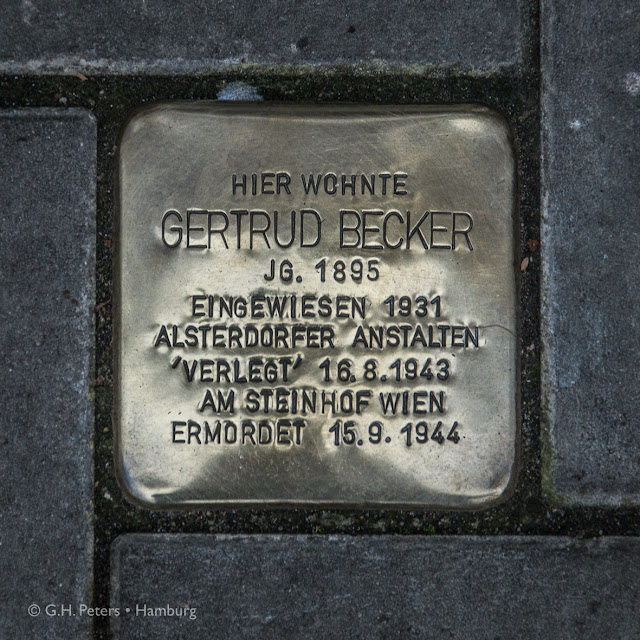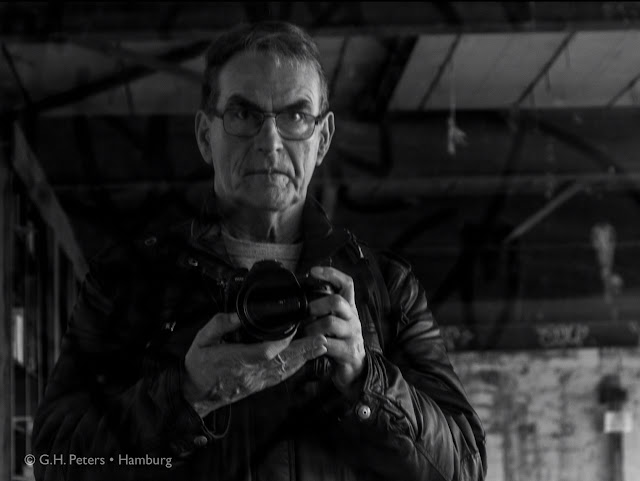Alben | albums
Freitag, 13. November 2020
Montag, 9. November 2020
Gegen das Vergessen • Lest we forget
A Stolperstein (pronounced [ˈʃtɔlpɐˌʃtaɪn]; plural Stolpersteine; literally “stumbling stone”, metaphorically a “stumbling block”) is a sett-size, ten-centimetre (3.9 in) concrete cube bearing a brass plate inscribed with the name and life dates of victims of Nazi extermination or persecution.
The Stolpersteine project, initiated by the German artist Gunter Demnig in 1992, aims to commemorate individuals at exactly the last place of residency—or, sometimes, work—which was freely chosen by the person before he or she fell victim to Nazi terror, euthanasia, eugenics, deportation to a concentration or extermination camp, or escaped persecution by emigration or suicide. As of December 2019, 75,000 Stolpersteine have been laid, making the Stolpersteine project the world's largest decentralized memorial.
The majority of Stolpersteine commemorate Jewish victims of the Holocaust. Others have been placed for Sinti and Romani people (then also called “gypsies”), homosexuals, the physically or mentally disabled, Jehovah’s Witnesses, black people, members of the Communist Party, the Social Democratic Party, and the anti-Nazi Resistance, the Christian opposition (both Protestants and Catholics), and Freemasons, along with International Brigade soldiers in the Spanish Civil War, military deserters, conscientious objectors, escape helpers, capitulators, “habitual criminals”, looters, and others charged with treason, military disobedience, or undermining the Nazi military, as well as Allied soldiers. WIKIPEDIA
Mittwoch, 4. November 2020
2459158 JDN
Today I am 26,000 days old. Why do I count the days? A day is the unit in which we experience our lives. Counting the days makes them more precious to me and reminds me how little time is left.
How did I compute? Obviously, multiplying my years by 365 doesn’t work, because it ignores the leap years of my life. So I use the Julian Day Number (JDN).
“The Julian Day Number (JDN) is the integer assigned to a whole solar day in the Julian day count starting from noon Universal time, with Julian day number 0 assigned to the day starting at noon on Monday, January 1, 4713 BC, proleptic Julian calendar (November 24, 4714 BC, in the proleptic Gregorian calendar), a date at which three multi-year cycles started (which are: Indiction, Solar, and Lunar cycles) and which preceded any dates in recorded history. For example, the Julian day number for the day starting at 12:00 UT (noon) on January 1, 2000, was 2 451 545.” WIKIPEDIA
There are various tools to calculate the JDN. This is the one I use:
http://www.warumwieso.de/Kalender-Berechnung.html
But enough of numbers and computing. Here are some lines from one of my favourite poems:
How dull it is to pause, to make an end,
To rust unburnish’d, not to shine in use!
As tho’ to breathe were life! Life piled on life
Were all too little, and of one to me
Little remains: but every hour is saved
From that eternal silence, something more,
A bringer of new things; and vile it were
For some three suns to store and hoard myself,
And this grey spirit yearning in desire
To follow knowledge like a sinking star,
Beyond the utmost bound of human thought.
Alfred, Lord Tennyson














